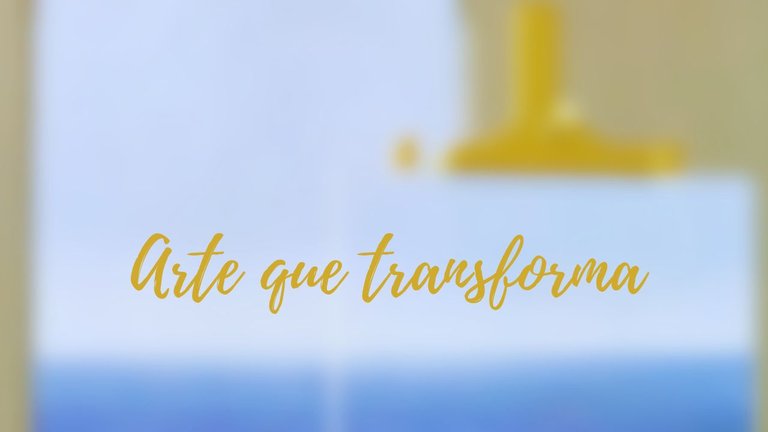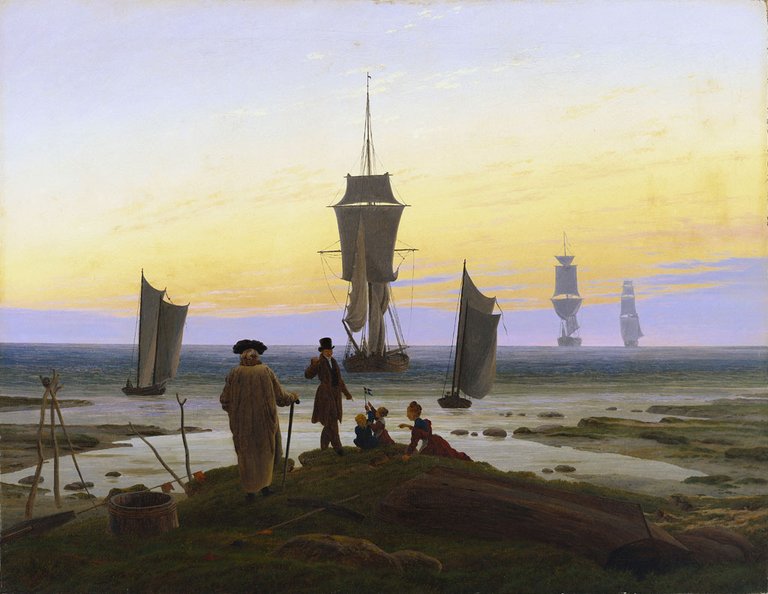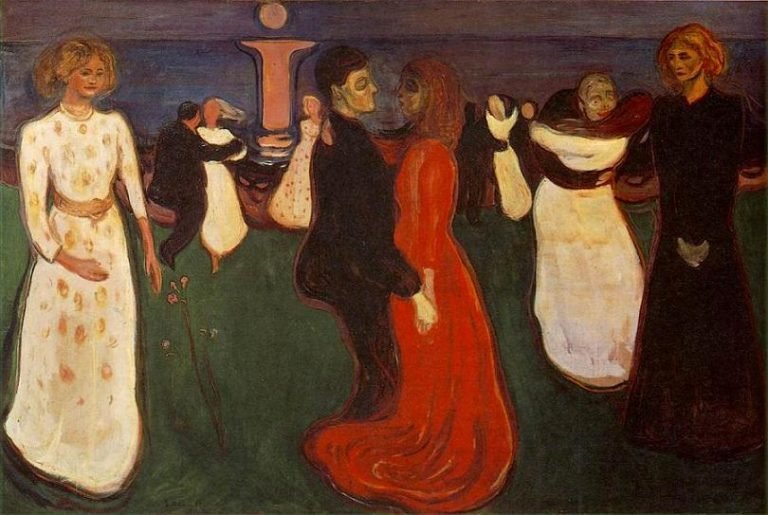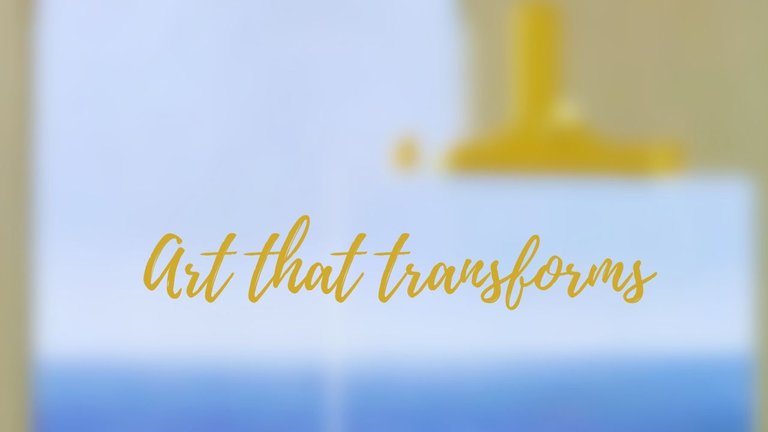Hola amigos, espero estén teniendo un lindo día, mi día se ha extendido hoy más de la hora acostumbrada y, para calmar la inquietud de la vida, decidí ponerme a reflexionar un poco. Entre arte y artículos sobre el significado de la vida, se me ocurrió la interrogante: ¿Qué obras de arte cambian mi forma de ver la vida? Hoy quiero compartirles mi respuesta personal a esta pregunta.
Es, sin dejar lugar a dudas, el arte, capaz de revelar lo más profundo del creador como del consumidor final. Junto a las preguntas más existenciales y desde la existencia de la filosofía, el arte ha estado acompañando al hombre como un reflejo de su tiempo pero también de su propia existencia: nuestras luchas han sido representadas, nuestras emociones más ocultas y nuestra relación con el mundo.

Algunas piezas de arte nos dan el consuelo necesario que buscamos, otras son más irreverentes y nos cuestionan nuestra propia identidad y existencia, incluso afectando nuestra percepción de la realidad y el tiempo.
Les presento las cinco obras que considero icónicas para mí y que me han hecho meditar sobre nuestra propia naturaleza. Espero que les guste mi selección, que por supuesto es una mirada extremadamente personal.
1. La condición humana, René Magritte
Con obras de Magritte pudiera llenar esta lista y, si me han leído con anterioridad, saben que soy algo entusiasta de su obra, así que verán repetido su nombre. Sin dudas, La condición humana es de esas obras que nos cuestionan cómo percibimos la realidad. La inclusión de un cuadro dentro de otro, arte dentro de arte, nos da la sensación de una continuidad casi inalterable en el mundo, un marco borroso entre realidad y ficción, arte y vida cotidiana.
| https://img.leopedia.io/DQmVPWgyy9Jo9K4okGusEkHbuPXxx6JPeXHUofiWcy4dh5z/k.webp |
|---|
| La condición humana, René Magritte Source |
Quizás esa búsqueda de reflejar a la perfección cómo percibimos el mundo real, la creación de simulacros sobre la realidad, un juego con la idea de que lo que nuestros ojos ven no siempre es lo que realmente existe, un golpe de una realidad superior: nuestra visión del mundo está moldeada por lo que creemos o por la subjetividad de interpretaciones.
2. Hombre que camina, Alberto Giacometti
Incomodidad, con esa única palabra podía describir la obra la primera vez que la vi: extrema delgadez, extremidades alargadas. Sin dudas, la sensación de estar ante una figura espectral está servida para el espectador, transmitiendo cierto aire de soledad, pero también de deshumanización, de pérdida de la humanidad. ¿A dónde caminamos y quiénes o qué somos? Preguntas sin respuestas.
3. Las edades de la vida, Caspar David Friedrich
Hace unos meses hablé sobre el simbolismo del número 3 en el arte, y esta obra no ocupa el lugar 3 en vano. Friedrich, a través de un paisaje y cinco figuras, nos muestra las tres etapas de la vida: niñez, adultez y vejez. A diferencia de otras obras de este tema, el paisaje de los barcos lo encuentro con más peso y simbología que las propias figuras humanas. Es un recordatorio de que el tiempo no se detiene para nadie, y que nuestra existencia y la de lo que nos rodea es extremadamente frágil y fugaz, somos solo un momento en el universo, naves a punto de partir.
 |
|---|
| Las edades de la vida, Caspar David Friedrich, Source |
4. El hijo del hombre, René Magritte
Lo prometido es deuda, regresé a Magritte, y en especial me atrevería a decir que su obra más conocida (tengo un post con mi interpretación en pixel art, por si les interesa, y un fotomontaje en la comunidad de LMAC).
| https://img.leopedia.io/DQmSHvdkjH54gZH1X5R7y9S88dPBCcdSa4bGBDdT22eP2ww/BAV_HORE.webp |
|---|
| El hijo del hombre, René Magritte Source |
Regresando a la obra, no hay dudas a esta altura de que es toda una intención de cuestionarnos nuestra identidad, pero a la vez nos hace cuestionar qué ocultan detrás de la fachada las personas que conocemos, cuánto nos ocultamos a nosotros mismos. La obra es un centenar de preguntas abiertas al espectador, para que seleccione de ese cúmulo las que más se ajusten a sus experiencias o, mejor, a su subjetividad, una invitación a tratar de descubrirnos y jugar a descubrir a los demás.
5. La danza de la vida, Edvard Munch
Sobre el quinto lugar tenía mis recelos, no en cuanto al autor, a diferencia de lo que podrías pensar, sino en cuanto a qué obra de él colocar. Tenía varias ideas en el tintero, pero me decanté por La danza de la vida. La razón es muy simple: vuelve a tocar el tema del ciclo de la vida, pero de una forma única. Algo tan asociado a la felicidad y la diversión, la danza, aquí nos guía a través de la repetición constante a un destino ineludible.
 |
|---|
| La danza de la vida, Edvard Munch Source |
Podemos preguntarnos si tenemos el control de nuestros pasos de baile (nuestra vida) o estamos simplemente siguiendo el ritmo y compás impuesto por el tiempo. Es terrorífico simplemente pensar si vivir es una celebración o una danza que nos arrastra a la inevitable muerte.
Bueno amigos, esta es solo una pequeña selección de obras, desde mi interpretación personal y mis escasos conocimientos de arte, pero sí desde mi más profundo deseo de indagar y cuestionar todo. Si hay algún error, en cuanto a algún dato o no estás de acuerdo con algo de lo que expuse, será un placer leerte y dialogar en los comentarios.
Un gran saludo. ¡Chau!
Quiero agradecerles sinceramente por tomarse el tiempo de leer este artículo. Su apoyo significa mucho para mí y me motiva a seguir compartiendo contenido que pueda ser útil e interesante para ustedes. Si encontraron este artículo útil o disfrutaron leyéndolo, les agradecería enormemente sus comentarios. Éxitos.

Hello friends, I hope you are having a great day. My day has stretched beyond the usual hour today, and to calm the unease of life, I decided to reflect a little. Between art and articles about the meaning of life, the question came to mind: What works of art change my way of seeing life? Today, I want to share my personal answer to this question.
Undoubtedly, art is capable of revealing the deepest aspects of both the creator and the final viewer. Alongside the most existential questions, and since the emergence of philosophy, art has accompanied humanity as a reflection of its time but also of its own existence: our struggles have been represented, our most hidden emotions, and our relationship with the world.

Some pieces of art provide the comfort we seek, while others are more irreverent and challenge our own identity and existence, even affecting our perception of reality and time.
Here are five works that I consider iconic for me and that have made me meditate on our own nature. I hope you like my selection, which is, of course, an extremely personal perspective.
1. The Human Condition, René Magritte
With Magritte's works, I could fill this list, and if you've read me before, you know I'm quite an enthusiast of his art, so you'll see his name repeated. Without a doubt, The Human Condition is one of those works that make us question how we perceive reality. The inclusion of a painting within another—art within art—gives us the sensation of an almost unalterable continuity in the world, a blurred boundary between reality and fiction, art and daily life.
| https://img.leopedia.io/DQmVPWgyy9Jo9K4okGusEkHbuPXxx6JPeXHUofiWcy4dh5z/k.webp |
|---|
| The Human Condition, René Magritte Source |
Perhaps this search to perfectly reflect how we perceive the real world, the creation of simulacra of reality, is a game with the idea that what our eyes see is not always what really exists—a strike from a higher reality: our vision of the world is shaped by what we believe or by the subjectivity of interpretations.
2. Walking Man, Alberto Giacometti
Discomfort—with that single word, I could describe the artwork when I first saw it: extreme thinness, elongated limbs. Undoubtedly, the feeling of being in front of a spectral figure is delivered to the viewer, conveying a certain air of solitude, but also of dehumanization, of loss of humanity. Where are we walking, and who or what are we? Questions without answers.
3. The Ages of Life, Caspar David Friedrich
A few months ago, I spoke about the symbolism of the number 3 in art, and this work does not occupy the third place in vain. Friedrich, through a landscape and five figures, shows us the three stages of life: childhood, adulthood, and old age. Unlike other works on this theme, I find the symbolism in the ships in the background heavier and more significant than the human figures themselves. It serves as a reminder that time does not stop for anyone and that our existence, and that of everything around us, is extremely fragile and fleeting—we are merely a moment in the universe, ships ready to set sail.
 |
|---|
| The Ages of Life, Caspar David Friedrich Source |
4. The Son of Man, René Magritte
A promise is a promise—I returned to Magritte, and particularly to what I would dare to say is his most famous work (I have a post with my interpretation in pixel art, in case you're interested, and a photomontage in the LMAC community).
| https://img.leopedia.io/DQmSHvdkjH54gZH1X5R7y9S88dPBCcdSa4bGBDdT22eP2ww/BAV_HORE.webp |
|---|
| The Son of Man, René Magritte Source |
Returning to the painting, by now there is no doubt that it is an intentional attempt to make us question our identity, but at the same time, it makes us wonder what people hide behind their façades, how much we conceal from ourselves. The work presents a myriad of open-ended questions to the viewer, allowing them to choose the ones that best fit their experiences or, better yet, their subjectivity. It invites us to try to discover ourselves while playing the game of discovering others.
5. The Dance of Life, Edvard Munch
Regarding the fifth place, I had some reservations—not about the artist, as you might think, but about which of his works to include. I had several ideas in mind, but I decided on The Dance of Life. The reason is very simple: it revisits the theme of life's cycle but in a unique way. Something as closely associated with joy and fun, the dance here guides us through constant repetition toward an inevitable fate.
 |
|---|
| The Dance of Life, Edvard Munch Source |
Well, friends, this is just a small selection of works, from my personal interpretation and my limited knowledge of art, but from my deep desire to investigate and question everything. If there are any errors regarding a fact or if you disagree with anything I have presented, it will be a pleasure to read your thoughts and engage in discussion in the comments.
A big greeting. Goodbye!
I want to sincerely thank you for taking the time to read this article. Your support means a lot to me and motivates me to continue sharing content that may be useful and interesting to you. If you found this article useful or enjoyed reading it, I would greatly appreciate your comments. Best of luck.

| I’m Ernesto, a Cuban passionate about art and writing. Always learning, always growing. Excited to share and learn more every day! I write about art, drawing, video games, nature, and review the things I like. My goal is to inspire and connect with others through my creative journey. |
|---|
Translated with DeepL.com (free version)
I apologize if there are any grammatical errors, English is not my native language, I have tried to be as careful as possible.
I regularly create images on Pixabay, which are free of copyright. Access my gallery by clicking here.
All assets, illustrations and banners have been created by me and are original content, unless otherwise specified.
The cover of this article was created using Canva.
Posted Using INLEO
